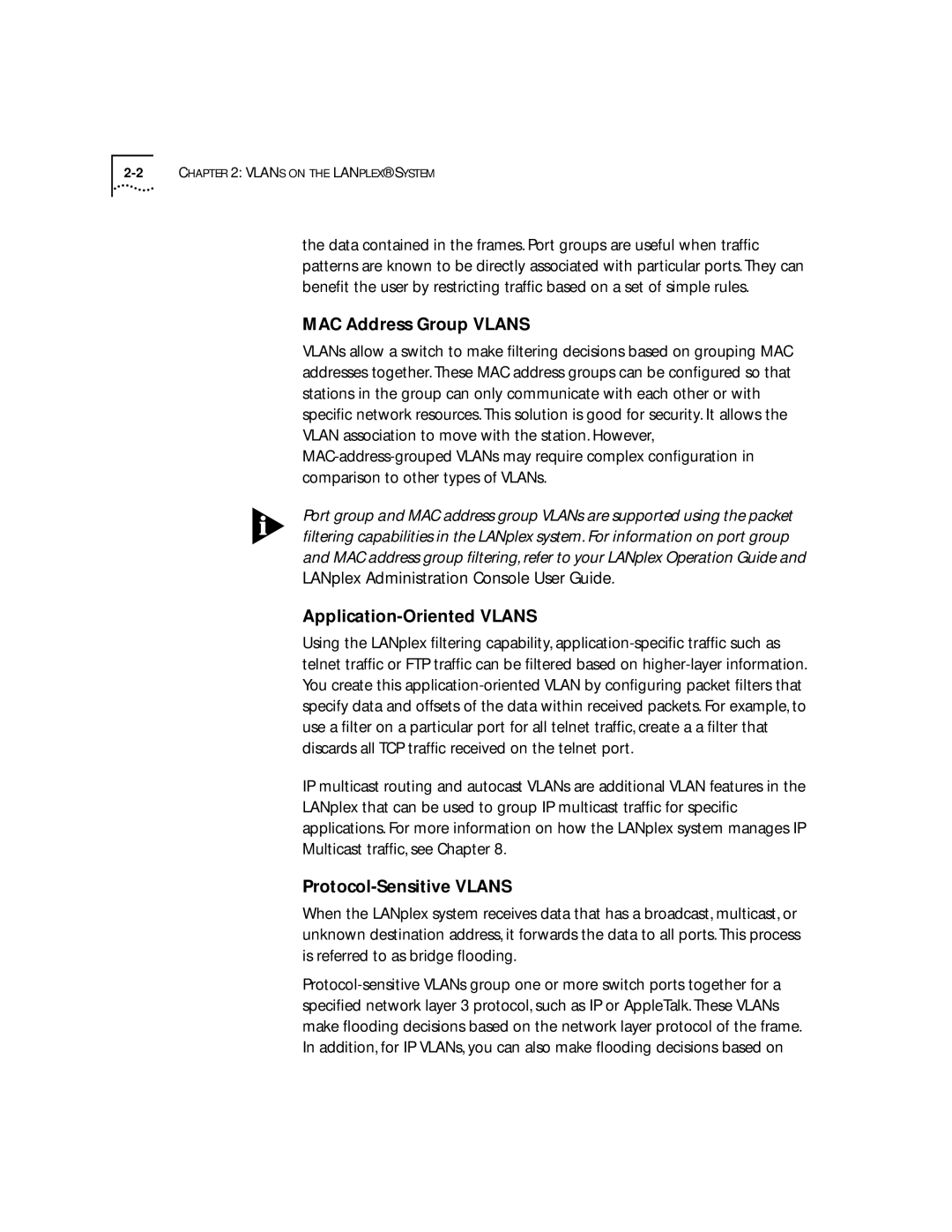
2-2 CHAPTER 2: VLANS ON THE LANPLEX® SYSTEM
the data contained in the frames. Port groups are useful when traffic patterns are known to be directly associated with particular ports. They can benefit the user by restricting traffic based on a set of simple rules.
MAC Address Group VLANS
VLANs allow a switch to make filtering decisions based on grouping MAC addresses together. These MAC address groups can be configured so that stations in the group can only communicate with each other or with specific network resources. This solution is good for security. It allows the VLAN association to move with the station. However,
Port group and MAC address group VLANs are supported using the packet filtering capabilities in the LANplex system. For information on port group and MAC address group filtering, refer to your LANplex Operation Guide and LANplex Administration Console User Guide.
Using the LANplex filtering capability,
IP multicast routing and autocast VLANs are additional VLAN features in the LANplex that can be used to group IP multicast traffic for specific applications. For more information on how the LANplex system manages IP Multicast traffic, see Chapter 8.
When the LANplex system receives data that has a broadcast, multicast, or unknown destination address, it forwards the data to all ports. This process is referred to as bridge flooding.
